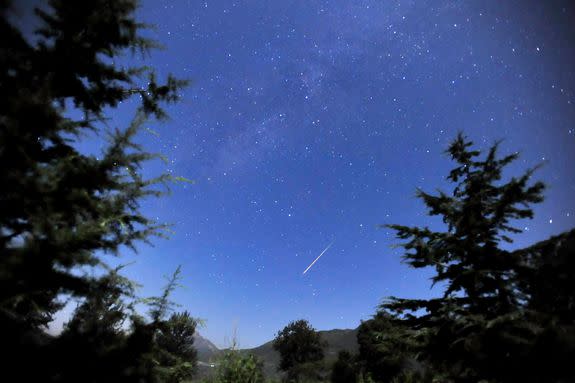Next week's Perseid meteor shower could be like no other

The Perseid meteor shower — which is expected to hit its peak during the overnight hours from August 11 to August 12 — is usually considered one of the most spectacular annual light shows of the year. This year, however, it's going to be particularly impressive.
Scientists are forecasting that the 2016 Perseid peak will feature an "outburst," with meteor rates potentially reaching as high as 200 meteors per hour in the darkest skies above the United States, according to NASA meteor expert Bill Cooke.
Typically, the Perseids produce about half that number of meteors per hour during their peak.
SEE ALSO: How to get the best view of the Perseid meteor shower, even in a city
Each year around this time, Perseid meteors grace skies around the world as the planet passes through an area of debris left behind by the Comet Swift-Tuttle. This year, the Earth will likely slide through a thicker stream of debris than usual, producing the outburst. The last Perseid outburst was in 2009.
When these bits of dust and ice slam into Earth's atmosphere, they produce what look like "shooting stars" briefly streaking above the planet.
How we know it's an outburst

Image: Zhou kun qd - Imaginechina/ap
Meteor researchers have a pretty good sense that this year's shower will be an outburst because of computer modeling. The models show that Jupiter's gravity has dragged bits of the comet left behind during its orbits in 1862, 1479, and 1079 into Earth's path around the sun, possibly making this an outburst year, Cooke says.
This kind of meteor shower forecasting is a pretty recent advent, he added.
"Before the 1990’s, we simply looked for periodicities in outbursts; for example, the Leonids were noted for storms every 33 years or so, and there were great displays in 1833 and 1866," Cooke told Mashable in an email.
"However, this method proved unreliable, as nothing much was seen in 1899 and 1933 (the lack of a show in 1899 was described by the newspapers back then as the 'greatest blow suffered by astronomy in the eyes of the public')."
Today, scientists use computer modeling to check the possible orbits of debris left behind by a comet and calculate how a planet's gravity influences those particles. This kind of calculation is called "meteor stream modeling," Cooke said.
Researchers in Ireland actually came up with the idea to do this in 1899, Cooke added. However, the computing power needed to accomplish this intense task wasn't available until about 20 or 30 years ago.
"Little progress was made until the 1990’s, which is when computers were finally fast enough to do meteor stream modeling," Cooke said. "Now we can do what the Irish astronomers suggested well over 100 years ago, and this enables us to forecast meteor shower activity for the Perseids."
Spotting the Perseids
Your greatest chance of actually seeing this meteor outburst is if you get far from city lights on the night of August 11 into the wee hours of the morning on August 12.
Artificial light and the light of the moon will blot out all but the brightest meteors streaking through the sky, so the farther from a city center you can get, the better.
NASA expects that the peak of the shower will be from midnight to sunrise on August 12, after the moon has set in your local area.
If you do plan to go meteor hunting, find an area that provides you with a comfortable view of a wide swath of the sky, lie back and allow your eyes about 45 minutes to adjust to the dark.
"The meteors you’ll see this year are from comet flybys that occurred hundreds if not thousands of years ago,” Cooke said in a statement. “And they’ve traveled billions of miles before their kamikaze run into Earth’s atmosphere.”